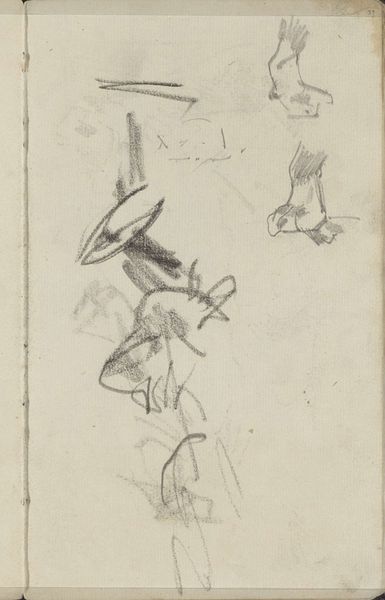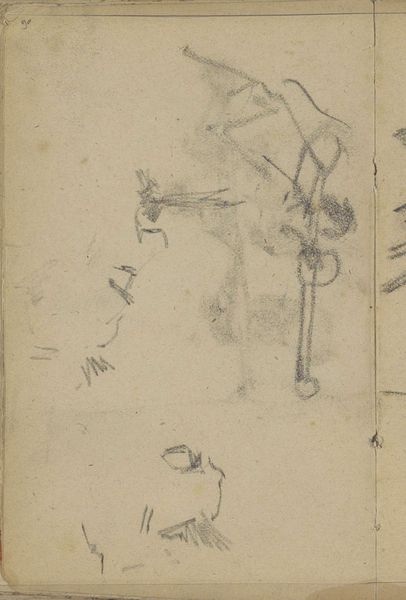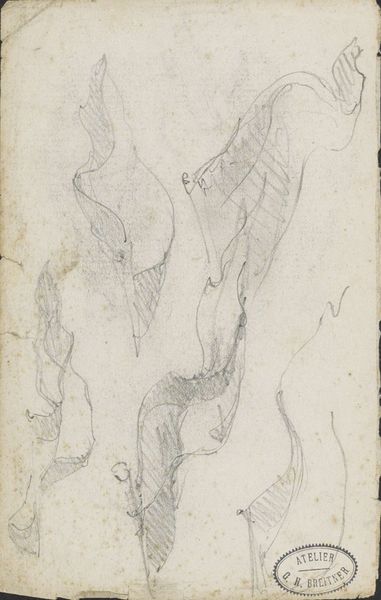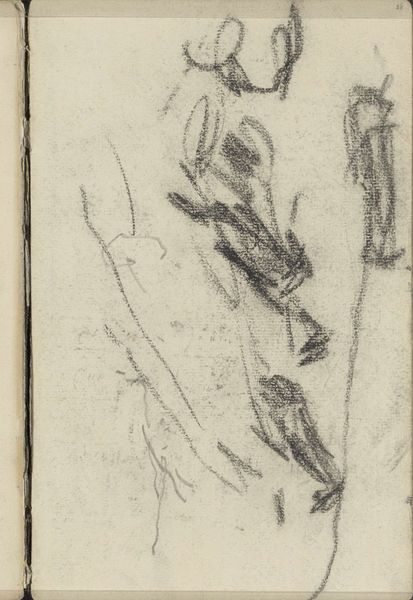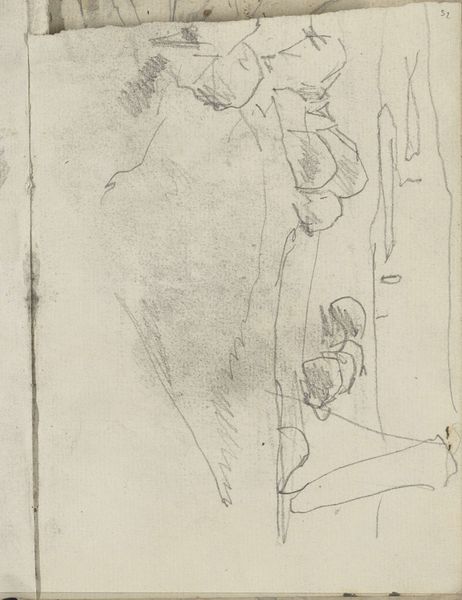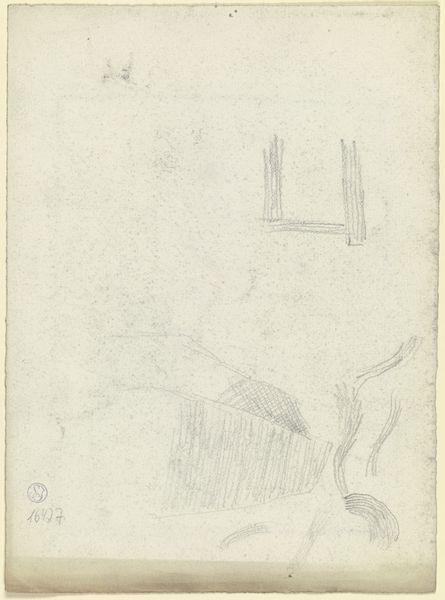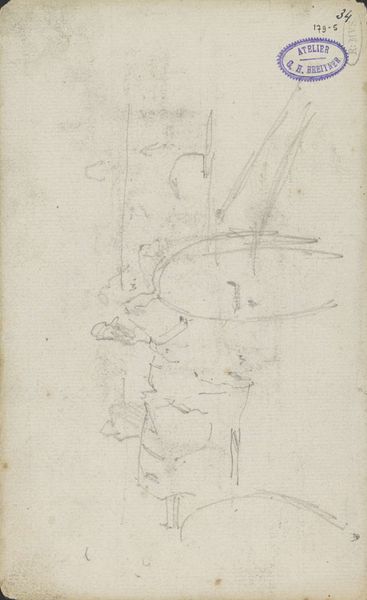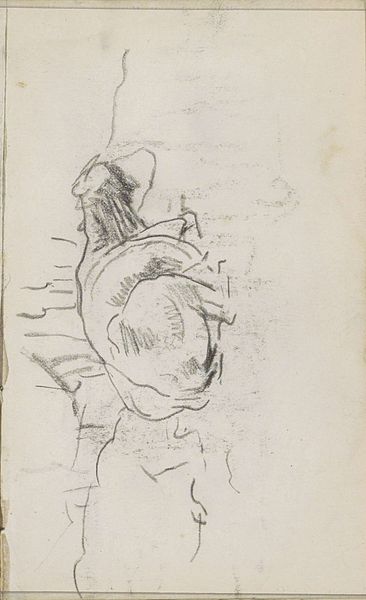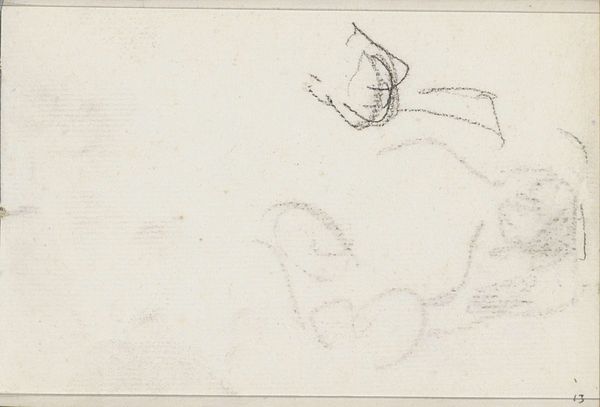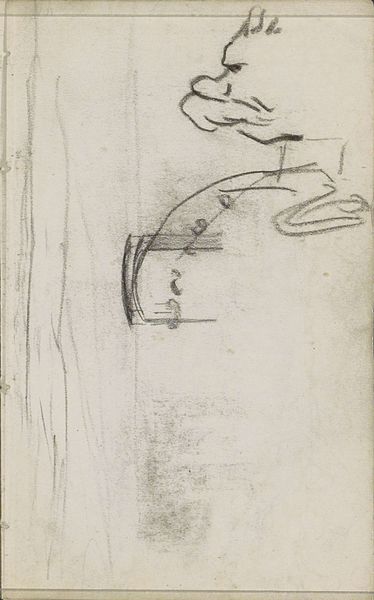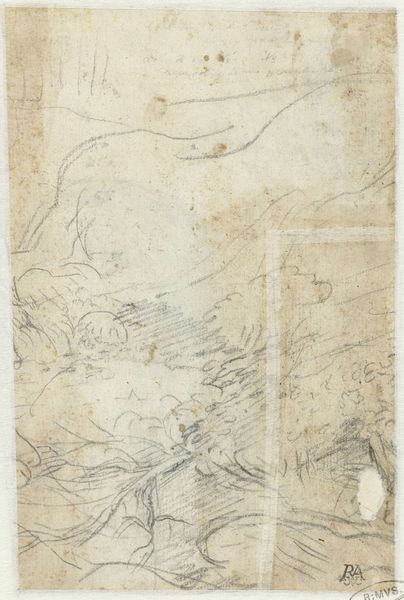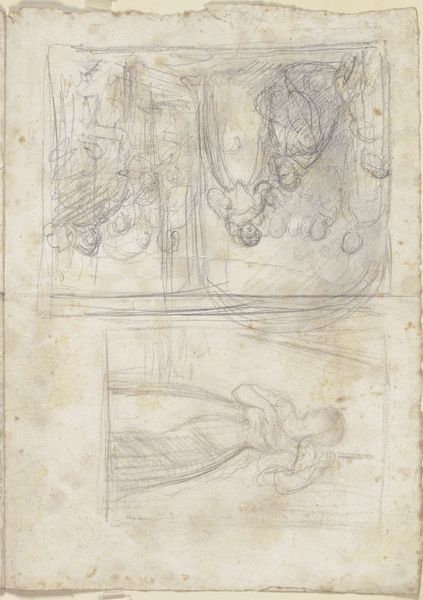
drawing, paper, pencil
#
drawing
#
amateur sketch
#
toned paper
#
light pencil work
#
quirky sketch
#
pencil sketch
#
incomplete sketchy
#
figuration
#
paper
#
personal sketchbook
#
pencil
#
line
#
sketchbook drawing
#
sketchbook art
#
initial sketch
Dimensions: height 354 mm, width 276 mm
Copyright: Rijks Museum: Open Domain
Editor: So, this is "Vissen in een aquarium," or "Fish in an Aquarium," a pencil drawing on paper by Gerrit Willem Dijsselhof, likely created sometime between 1876 and 1924. It feels very preliminary, like a quick sketch. What strikes you about this piece? Curator: It's fascinating to see this as a product of its materials. Look at the pencil – the graphite mined, processed, shaped, and the paper, likely wood pulp, manufactured into a surface receptive to the artist's touch. What labor went into preparing these humble materials that enabled Dijsselhof to capture this glimpse of aquatic life? Editor: That's an interesting perspective, focusing on the raw materials and production. I guess I was thinking more about the image itself, the fish and the… are those plants? Curator: Exactly! But isn’t the fish tank itself a manufactured environment, a constructed ecosystem displayed for consumption, both literally for the fish who are reliant on the aquarium's controlled condition and figuratively for us? How does the artist, through the means of pencil and paper, participate in and perhaps even critique that cycle of production and consumption? Editor: I never thought about it that way. I was seeing a simple, observational sketch, but you’re suggesting the materials and the act of creating this image themselves hold meaning about manufactured environments. Curator: Precisely. Even the lines themselves—are they decisive? Or are they tentative, searching? Does the 'incomplete sketchy' feel, as labeled in its tags, indicate a reluctance, a questioning of the artistic process or even Dijsselhof’s own participation in constructing and consuming images? Editor: I see what you mean. It is almost as though the work resists being a polished, finished product, highlighting its status as a manufactured object. Curator: And by doing so, calls our attention to the very means of its creation and its entanglement in the larger world of materials, labour, and even aquariums. It's definitely given me a fresh perspective.
Comments
No comments
Be the first to comment and join the conversation on the ultimate creative platform.
